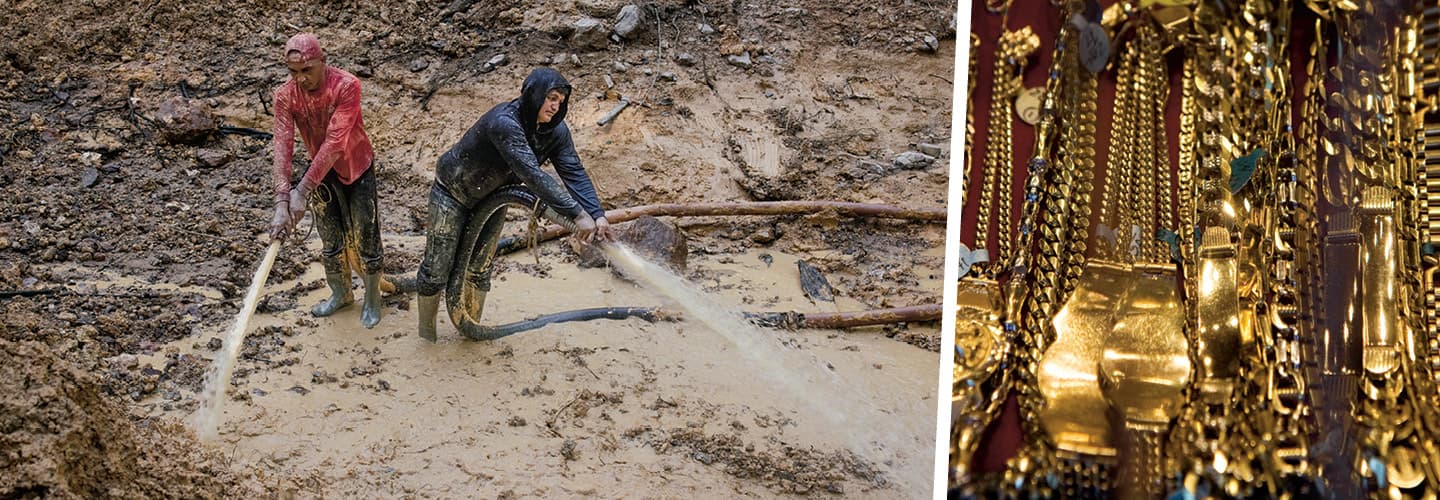The man was knee-deep in mud in the 100-yard gash he had cut into the Amazon rainforest. After filtering brown water out of a pan, he found the small, shiny flake he was looking for: a mixture of gold and mercury.
Jeovane de Jesus Aguiar had drizzled liquid mercury into the ground in his makeshift gold mine on the eastern edge of the small South American nation of Suriname, just as he had every few days.
The toxic element binds with gold dust and forms a substance he can pluck out of the sludge. Then he sets the mixture aflame, burning off the mercury into the air, where the wind spreads it across the forest and across borders, poisoning the plants, animals, and people it finds.
Left behind is the gold. That part usually ends up in Europe, the United States, or the Persian Gulf, most often as expensive jewelry.
Twenty minutes up the river, the Wayana Indigenous community is getting sick. The Wayana eat fish from the river every day, and, in recent years, many have suffered from joint pain, muscle weakness, and swelling. They also say birth defects are rising.
Tests show that the Wayana have double to triple the medically acceptable levels of mercury in their blood.
“We’re not allowed to eat certain fish anymore,” says Linia Opoya, a Wayana member, showing her hands, which ache after meals. “But there’s nothing else. That’s what we’ve always eaten.”
The man was deep in the Amazon rainforest. He was knee-deep in mud in the 100-yard ditch he had cut. He filtered brown water out of a pan. There was a small, shiny flake at the bottom. He found what he was looking for—a mixture of gold and mercury.
At the eastern edge of the small South American nation called Suriname, Jeovane de Jesus Aguiar drizzled liquid mercury into the ground. He did this at his makeshift gold mine every few days.
Mercury, a toxic element, binds with gold dust. It forms a substance he can pick out of the mud. Then he sets the mixture on fire and burns off the mercury into the air. The wind then spreads it across the forest and across borders. It poisons the plants, animals, and people it reaches.
Aguiar is left with just the gold. It usually ends up in Europe, the United States, or the Persian Gulf, most often as expensive jewelry.
Twenty minutes up the river, the Wayana Indigenous community is getting sick. The Wayana eat fish from the river every day. Recently, many have suffered from joint pain, muscle weakness, and swelling. They also say birth defects are rising.
Tests show that the Wayana have double to triple the medically acceptable levels of mercury in their blood.
“We’re not allowed to eat certain fish anymore,” says Linia Opoya, a Wayana member, showing her hands, which ache after meals. “But there’s nothing else. That’s what we’ve always eaten.”

